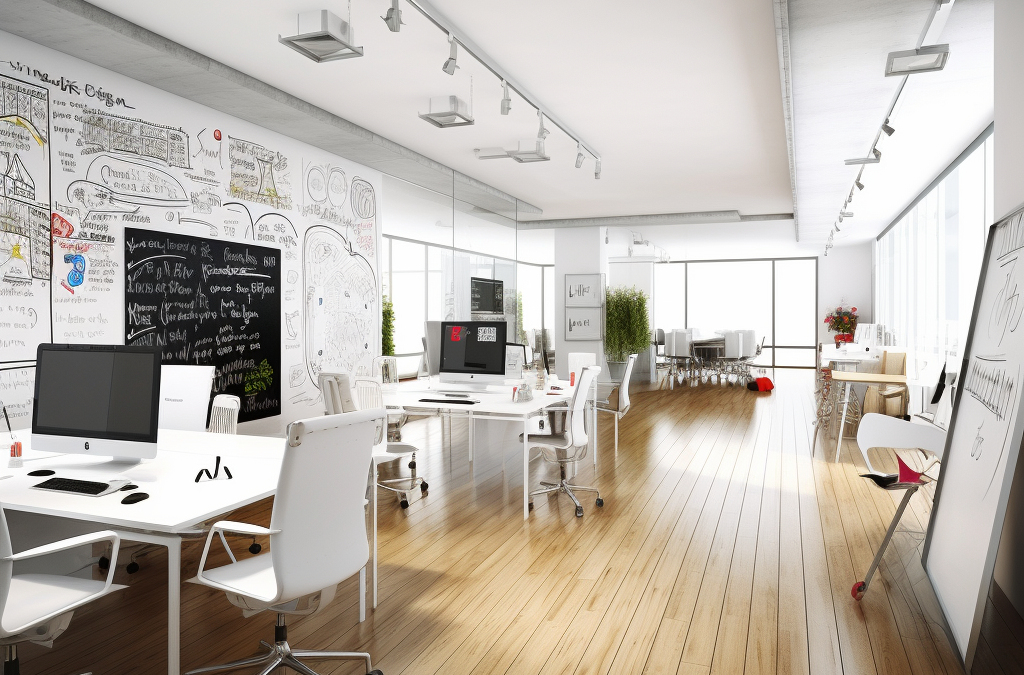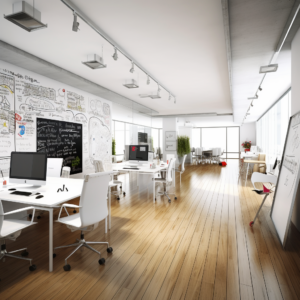Unexpected Applications of Dry Erase Painted Walls in Various Industries
In an era where innovation knows no bounds, the applications of dry erase painted walls have transcended traditional office settings, making their mark across diverse industries. From healthcare to hospitality, these versatile surfaces have proven their worth by transforming spaces and enhancing functionalities in ways that were once unforeseen. In this exploration of unconventional uses, we uncover the remarkable adaptability of dry erase walls and their pivotal role in revolutionizing various sectors.
This article will delve into the unexpected and innovative applications of these walls in industries beyond the boardroom, shedding light on how they have reshaped environments and elevated how professionals and individuals engage with their surroundings. As organizations seek to optimize their spaces for enhanced communication, collaboration, and engagement, these walls have emerged as unassuming yet indispensable tools that redefine how we work, learn, and interact.
1. Enhancing Healthcare Communication
Healthcare facilities have embraced dry erase painted walls as a powerful tool for communication and education. In patient rooms and clinical spaces, these writable surfaces serve as interactive platforms for explaining medical procedures, illustrating treatment plans, and engaging patients in their healthcare journey. Physicians can visually communicate complex information, bridging the gap between medical jargon and patient understanding. Furthermore, these walls facilitate collaborative discussions among healthcare teams, promoting seamless communication and informed decision-making.
In addition to improving patient experiences, dry erase painted walls are helpful in medical training and conferences. During medical education sessions, these walls enable trainers to illustrate concepts, medical diagrams, and procedural workflows, enhancing the comprehension of trainees. In medical conferences, presenters can use the surfaces to highlight key points and interact with audiences in real-time. The adaptability of dry erase painted walls in healthcare settings goes beyond the clinical environment, contributing to comprehensive medical education and enhancing communication among healthcare professionals.
2. Fostering Creativity in Education
In education, dry erase walls have emerged as catalysts for creativity and engagement. Classrooms with these surfaces transform into dynamic learning environments where students can brainstorm ideas, solve problems, and visualize concepts. The walls encourage active participation and visual learning, from Mathematics equations to artistic sketches. Educators have harnessed the power of these writable spaces to spark curiosity, encourage collaboration, and enhance the overall learning experience.
In higher education institutions, dry erase walls find applications in collaborative research and group projects. Study groups can utilize these surfaces to map out ideas, draw diagrams, and structure their research strategies. On the other hand, professors can use the walls to illustrate complex theories and concepts, ensuring better comprehension among students. Integrating such walls in educational settings fosters an interactive and dynamic learning environment that promotes students’ critical thinking, creativity, and effective communication skills.
3. Designing Interactive Retail Spaces
Retailers are capitalizing on the interactive nature of dry erase painted walls to captivate customers and enhance their shopping experience. In stores, these surfaces act as dynamic canvases for showcasing product features, promotions, and demonstrations. Customers can interact directly with the information displayed, making informed decisions. For instance, a clothing store might use the walls to showcase outfit combinations, allowing shoppers to envision complete looks. By providing an immersive and engaging shopping journey, retailers leverage these walls to create memorable and interactive brand experiences.
Moreover, the adaptability of dry erase walls extends to pop-up shops and temporary retail installations. By using these surfaces to display relevant information, brands can quickly transform spaces to align with specific campaigns or events. This flexibility allows retailers to stay relevant and engage with customers on a deeper level, fostering brand loyalty and increasing customer satisfaction.
4. Transforming Hospitality Interiors
Hotels and hospitality venues have embraced the versatility of dry erase painted walls to create customized and engaging environments. From interactive menus in restaurants to collaborative brainstorming spaces in conference rooms, these walls seamlessly integrate into the guest experience. In guest rooms, the walls serve as creative outlets, allowing visitors to jot down notes, leave messages, or unleash their artistic flair. The flexibility of these surfaces enhances the overall guest experience by providing functional and personalized spaces.
Beyond guest rooms, dry erase painted walls find applications in event and meeting rooms. These walls enable event organizers to create dynamic visual aids, interactive schedules, and engaging icebreaker activities. Participants can actively contribute, share ideas, and collaborate in real-time, leading to more productive and engaging events. The integration of these walls transforms hospitality venues into hubs of creativity, interaction, and memorable experiences.
5. Empowering Manufacturing and Logistics
The manufacturing and logistics sectors have also found value in dry erase painted walls as aids for visual communication and organization. Warehouses and production floors often use these surfaces to display production schedules, task lists, and safety instructions. The visual representation of information improves efficiency by minimizing errors and facilitating quick decision-making. These walls streamline operations in fast-paced environments by offering a centralized hub for real-time updates and critical information.
Also, dry erase walls significantly influence training and process improvement. In manufacturing, teams can use these surfaces to map out workflow diagrams, highlight key process steps, and collaborate on continuous improvement initiatives. Training sessions become more engaging as trainers can visually explain complex procedures, ensuring better retention and understanding among trainees. In logistics, these walls aid in route planning, load management, and real-time updates, contributing to smoother operations and improved resource utilization.
6. Facilitating Collaborative Design
In architecture, design, and engineering, dry erase painted walls have become indispensable tools for collaborative creativity. Design studios and firms use these surfaces for brainstorming sessions, sketching concepts, and mapping out project timelines. Teams can ideate freely, erase, and iterate on ideas seamlessly. These walls provide a space where the design vision comes to life, fostering teamwork and multidisciplinary collaboration.
Beyond traditional design firms, construction sites also benefit from integrating dry erase walls. Project managers and teams can use these surfaces to illustrate construction plans, highlight safety protocols, and communicate progress. The visual nature of these walls aids in preventing errors and misunderstandings, leading to smoother construction processes and improved project outcomes.
7. Energizing Fitness and Wellness Spaces
Fitness centers and wellness studios are harnessing the motivational power of dry erase painted walls to enhance member engagement and participation. Workout plans, challenges, and progress trackers can be displayed on these surfaces, inspiring individuals to set and achieve their fitness goals. The interactive nature of the walls encourages social interaction, community engagement, and a sense of achievement, contributing to a more fulfilling fitness experience.
Beyond individual fitness goals, these walls foster a sense of community among members. Fitness challenges, leaderboards, and shared achievements can be displayed on these surfaces, encouraging healthy competition and camaraderie among participants. Moreover, wellness studios use these walls for scheduling classes, providing essential updates, and creating an atmosphere of inclusivity and motivation.
Conclusion
The widespread adoption of dry erase painted walls across various industries underscores their adaptability and transformative potential. From healthcare to hospitality, education to manufacturing, these versatile surfaces have transcended their initial use, enhancing communication, collaboration, and creativity. By fostering engagement and offering interactive spaces, dry erase walls continue revolutionizing workplaces, shaping how we interact, learn, create, and experience various sectors of our lives.
As we look ahead, the potential of these walls remains boundless. Industries will undoubtedly discover even more ingenious ways to leverage these surfaces, further enhancing productivity, communication, and engagement. Whether in healthcare settings that promote patient understanding, in classrooms that ignite curiosity, or in retail spaces that captivate customers, the impact of dry erase walls continues to extend far beyond what we initially envisioned. These surfaces, with their versatile applications, are not merely tools but catalysts for innovation, fostering dynamic environments and contributing to the success of diverse industries.



Recent Comments